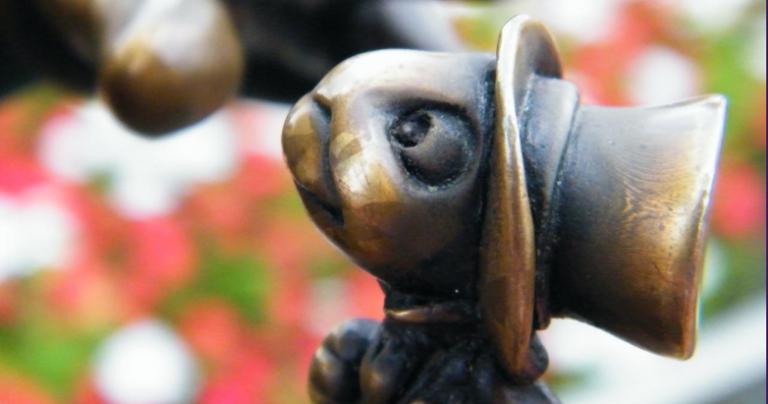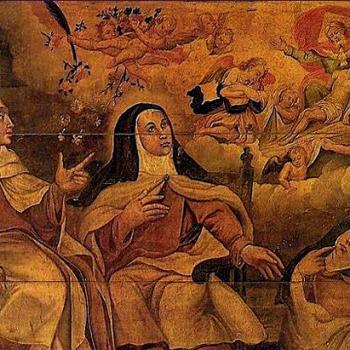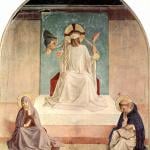A Classic Children’s Morality Tale That Unmasks Authoritarian False Conscience
It is interesting to me, then, that during the height of politically unchallenged Nazi ascendancy, a children’s film was produced in the United States that clarifies the meaning of conscience and the nature of its struggle against deceptive competitors with remarkable wisdom and poignancy. It did not perform well at the box office when first released in 1940, but finally gained popularity when re-released in 1945, after practically the whole world had been ravaged by Nazi and other authoritarian spirits. This film I speak of is Pinocchio, and it influenced the moral vocabulary of Americans for a generation seeking to reconstruct a just world after World War II.
As a Gen Xer, I saw Pinocchio back when Disney would theatrically re-release classic films instead of trying to produce a new blockbuster every year. I must have been 8 years old, because I recall my little sister, who was just turning 3, declaring for months afterwards: “I’m a real boy.” Sadly, the evangelical circles in which we were raised have concerned themselves far more with correcting the gendered expression of this sentiment than they have with affirming its moral content: Pinocchio became a “real boy” by displaying courage, truthfulness, and selflessness, which he accomplishes through death and resurrection, after straying into sinfulness and bondage for a while. I did not remember any of these specifics after a single childhood viewing, but rediscovering the richness of the story as an adult, I wonder in retrospect how it may have influenced my understanding of conscience as I was entering the age of reason.
Before his transformation, Pinocchio has a liminal existence as a creation of Geppetto who is self-animated like a boy, and yet not fully realized in his humanity. This life is a gift of the Blue Fairy (also depicted later in the movie as a dove), and she also gives him a conscience, personified as Jiminy Cricket. If only Pinocchio would pay Jiminy heed and ignore the voices that seek to mislead and exploit him, his quest to become a “real boy” might have been an easier one. Then again, one cannot display courage or selflessness without being tested.
The primary character who seeks to mislead and exploit Pinocchio is a fox who is ironically—or perhaps aptly—named Honest John. A song that was used in previews of the movie warned:
Honest John, look out for Honest John,
‘Cause he’s only honest by reputation.
Though you’ll find him in church on Sunday,
he’ll steal pennies from a blind man Monday.
…
There is one in every city,
One in every neighborhood.
He’s doing well, but to hear him tell
He’s always doing goodHe belongs to all the lodges,
Wears a politician’s smile.
Any time that you run into him
It’s time to run a mile.
The message is clear: just because someone identifies himself as “Honest”—or Teacher or Father or Councilman or President—doesn’t mean they can be trusted over the voice of one’s conscience. Quite to the contrary, the song counsels that when you see someone making ostentatious show of their reputational credentials, run the other way.
But poor naive Pinocchio isn’t privy to these warnings. Honest John accosts him on the way to school (when Jiminy Cricket isn’t with him) and promises him that life in the theater is a shortcut to fame and fortune. In reality, he’s looking for his own fortune, selling to Pinocchio into slavery under the entertainer Stromboli. The Blue Fairy comes to his rescue, but asks him to explain how he ended up in such a predicament. Pinocchio is too ashamed to tell the truth, leading to the famous nose-growing episode. Jiminy pleads for forgiveness on his behalf, but Pinocchio never really comes clean. He just promises never to lie again, and the Blue Fairy frees him from his cage with a warning this is a one-time intervention. Fool me once, shame on you, I suppose.
Pinocchio sets off for home vowing to “make good this time,” but Honest John catches up to him, and he gets separated from Jiminy again. This time the fox tells Pinocchio he “must be a nervous wreck” after hearing Stromboli had locked him in a cage, and proceeds with making a bogus “diagnosis” and prescribing a vacation on Pleasure Island as a cure. This is once again a ruse to make money by selling Pinocchio to yet another slave master. Despite the fateful destination being named “Pleasure Island,” it is Honest John’s phony “expertise,” combined with lack of consultation with his conscience, that actually entraps Pinocchio the second time, not Pinocchio’s appetites.
In the company of other boys who act with greed and even malice, Pinocchio begins to ape their bad behavior. Even so, most of his “sins” on Pleasure Island are engaging in addictive behaviors (smoking, gambling, drunkenness) rather than doing harm to others. Nevertheless, these addictions have the power to reduce the boys to conscience-less animals (they turn into donkeys) and subject them to slave labor in the service of those who would exploit them.
Fortunately, Pinocchio reconnects with Jiminy Cricket before his transformation into a donkey is complete, and thereby is able to escape the cursed community of Pleasure Island. He tries to return to his father, but finds out his father has gone out to save him, and been swallowed in the belly of a whale. At this point, Pinocchio spares no effort to save his father, which he succeeds in doing at the cost of his own life. The movie ends with the Blue Fairy resurrecting him as a Real Boy, and certifying Jiminy Cricket as a genuine conscience.
The Christian allegory in Disney’s Pinocchio is far more obvious than the 19th century Italian children’s book that served as its initial inspiration. The book was very much about teaching children to follow conventional morality, to work hard instead of playing, and to expect rewards of parental love and financial success for doing so. The Disney animators made Jiminy Cricket into a major character teaching the salvific importance of conscience, something that seemed to be in very short supply back in Italy at the time. They also made the morality tale much less capitalistic, transforming Pinocchio into a Real Boy not for academic achievement and hard manual work, but for sacrificing his very life to save that of Geppetto, and morphing the additional reward of gold coins into a gold star for the quality of his conscience.













